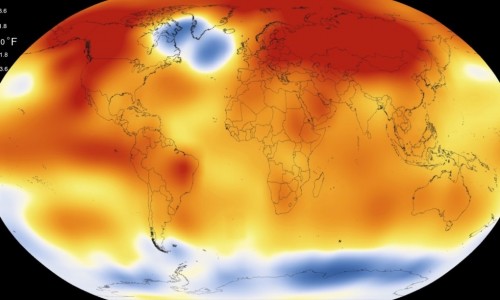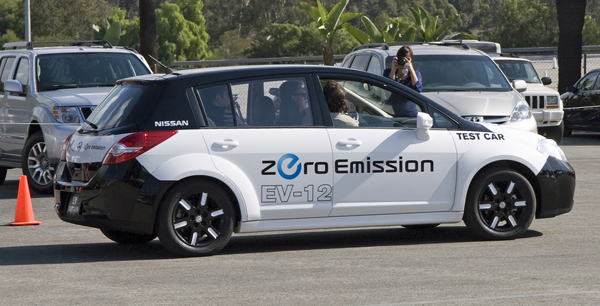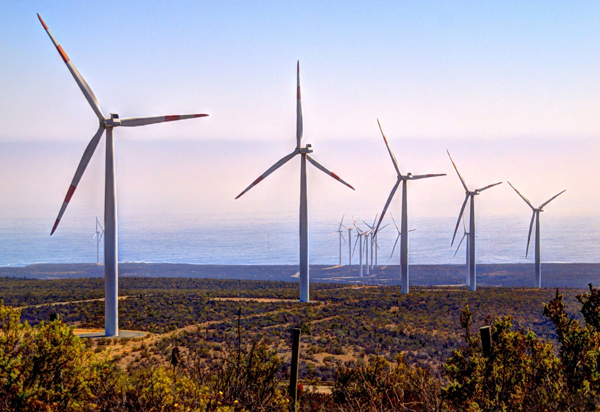RECOMMENDED VIDEOS

UNSW Built Environment Research
UNSW Built Environment

SIRIM : Lifecycle Assesment (LCA) Study
SIRIM Berhad

FirstCarbon Solutions : Sustainability Solutions Anywhere…
FirstCarbon Solutions, Philippines

Green Star rating tools and the sustainable built environment…
Green Building Council Australia

Energy Solutions for a Sustainable Future
University of Technology Sydney
Related Stories
Bronx community garden transformed with sustainable improvements
The Philippines envisions a green smart city to combat pollution in Manila
Flawed recycling results in dangerous chemicals in black plastic
IE Expo 2018: Asia's Leading Trade Fair for Environmental Technology Solutions
London store recycles 60,000 plastic bottles for 3D-printed interior
29 Jun, 2016

6 important steps we need to take to slow down climate change
Others | UNITED STATES | 29 Jun, 2016
Published by : Eco Media Asia
While there is a scientific consensus that global warming is real and that it is caused by human activity, whether or not climate change can be slowed down or even reversed is hotly (no pun intended) debated in the scientific community. Some climate experts such as Guy McPherson say that near-term human extinction is inevitable while other climate scientists like Michael Mann believe that it isn’t too late to save human civilization from climate catastrophe. So what actions would we need to take in order to restore a safe and stable climate? We need to eliminate greenhouse gas emissions as rapidly as possible. But that won’t be enough to reverse global warming. We must also draw down excess atmospheric CO2 by increasing natural carbon sinks. Here are six important steps we need to take to slow down climate change.

Image via Wikipedia
1. RESTORE ECOSYSTEMS
According to Biodiversity for a Livable Climate, “a focus on fossil fuel emissions reduction as the primary solution to reversing climate change is misguided and futile.” The organization argues that atmospheric CO2 concentrations that have exceeded 400 parts per million in Antarctica for the first time in four million years “will not decline without a significant rise in the carbon sequestration mechanisms of the biosphere.” Restoring soils, grasslands, wetlands, forests, coastal and ocean ecosystems can sequester gigatons of atmospheric carbon and cool the biosphere.

Image via Wikipedia
2. PROMOTE REGENERATIVE AGRICULTURE
According to Dr. Rattan Lal, a soil scientist at Ohio State University, a two percent increase in carbon content of the planet’s soils could offset 100 percent of greenhouse gas emissions going into the atmosphere. Industrial agriculture, or factory farming, is a major contributor to global warming, emitting six billion tons of greenhouse gas emissions in 2011, or about 13 percent of total global emissions, according to the World Resources Institute. Transitioning from factory farming to carbon farming could play an important role in reversing global warming. Organically managed soils can remove carbon from the atmosphere and safely store the carbon in soil organic matter.

Image via Wikimedia
3. ACHIEVE NET ZERO GREENHOUSE GAS EMISSIONS
Many countries, cities, companies and organizations around the world are committing to carbon neutrality in the coming decades. Vatican City has already achieved net zero greenhouse gas emissions by installing solar panels and Bhutan impressively has gone beyond carbon neutral to become carbon negative. Countries pledging carbon neutrality include Costa Rica, Iceland, Maldives, New Zealand, Norway, Tuvalu, Sweden and the Canadian province of British Columbia. Our transportation sector is moving toward zero emissions technology. The era of affordable electric vehicles is about to begin with the introduction of the Chevy Bolt and Tesla Model 3. And air travel could eventually become emissions-free with the Solar Impulse 2’s around-the-world flight powered entirely by solar energy demonstrating that a zero emissions future in aviation is possible.

Image via Wikipedia
4. MAKE THE SWITCH TO 100% RENEWABLE ENERGY SOURCES
In addition to pledging to eliminate greenhouse gas emissions, places around the world are working on scaling up renewable energy sources such as solar energy, wind power, geothermal, hydropower, wave power, tidal power, biofuels and biomass to replace polluting fossil fuels from the production of oil, coal and gas. The Solutions Project, started by Mark Jacobson, director of the Atmosphere and Energy Program at Stanford University, demonstrates how all 50 states can transition to 100 percent renewables by 2030 through a combination of wind, water and solar. Jacobson is currently mapping out a 139-country plan to power the world with clean, renewable energy. Places that have already achieved 100 percent renewable energy include the U.S. cities of Aspen and Burlington, the countries of Iceland and Norway and the Canadian province of Quebec. Cities pledging to shift to 100 percent renewable energy include San Diego, San Francisco, Vancouver, Copenhagen, Munich and Sydney.

Image via Wikimedia
5. IMPROVE ENERGY EFFICIENCY
Energy efficiency investments have enormous potential to reduce greenhouse gas emissions. According to the International Energy Agency’s Energy Efficiency Market Report 2015, energy efficiency improvements since 1990 prevented more than 870 million tons of carbon emissions in 2014 and 10 billion tons over the last 25 years. The International Energy Agency says that energy efficiency is “the most effective tool to reduce energy sector carbon emissions, accounting for more than 40 percent of the required reductions to limit global warming to 2 degrees centigrade.” Examples of energy efficiency include LED lighting, natural lighting, ENERGY STAR-certified appliances, passive solar heating and turbochargers in cars and airplanes.

Image via Pexels
6. SWITCH TO A PLANT-BASED DIET
A new study by Oxford University researchers published in the Proceedings of the National Academy of Sciences finds that transitioning to vegetarian diets could cut food-related greenhouse gas emissions 63 percent by 2050 and that switching to vegan diets could reduce carbon emissions by 70 percent. Currently, the food system is responsible for more than a quarter of all greenhouse gas emissions and a recent report from think tank Chatham House found that eating less meat and adopting a plant-based diet is crucial to meeting the climate targets set forth in the Paris agreement and avoiding dangerous global warming.
Article by Josh Marks at Inhabitat.com
Lead image via Wikimedia
